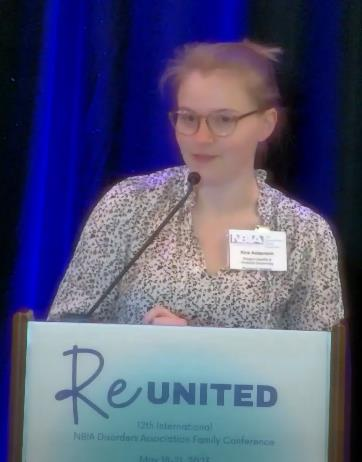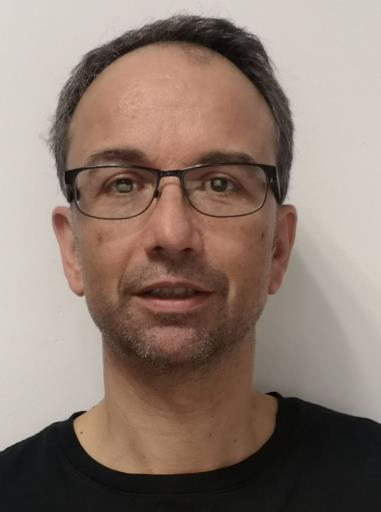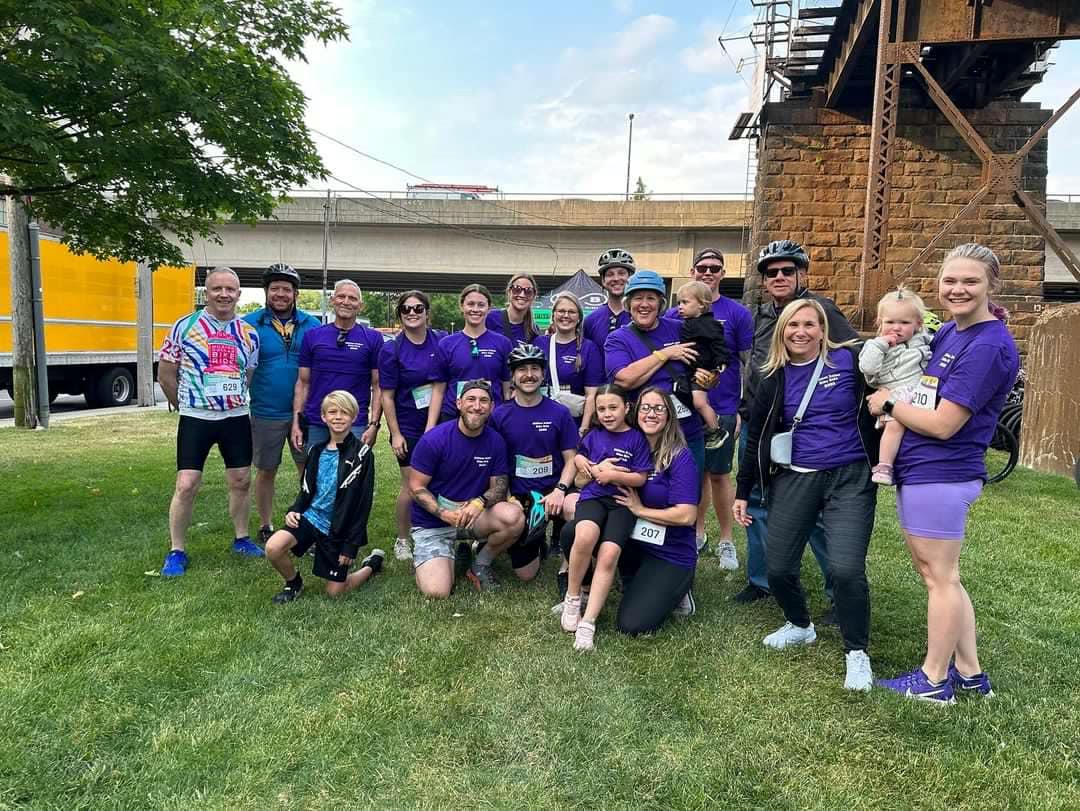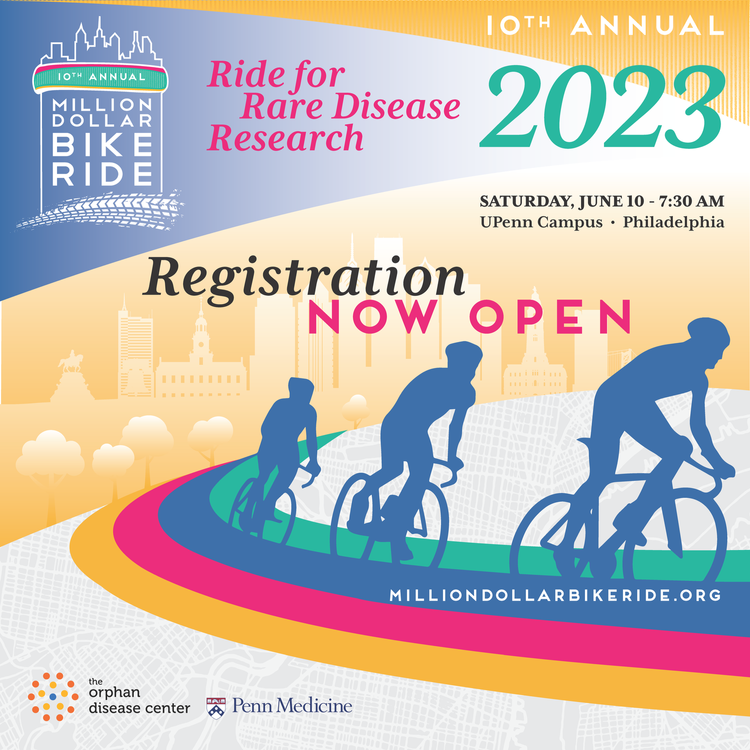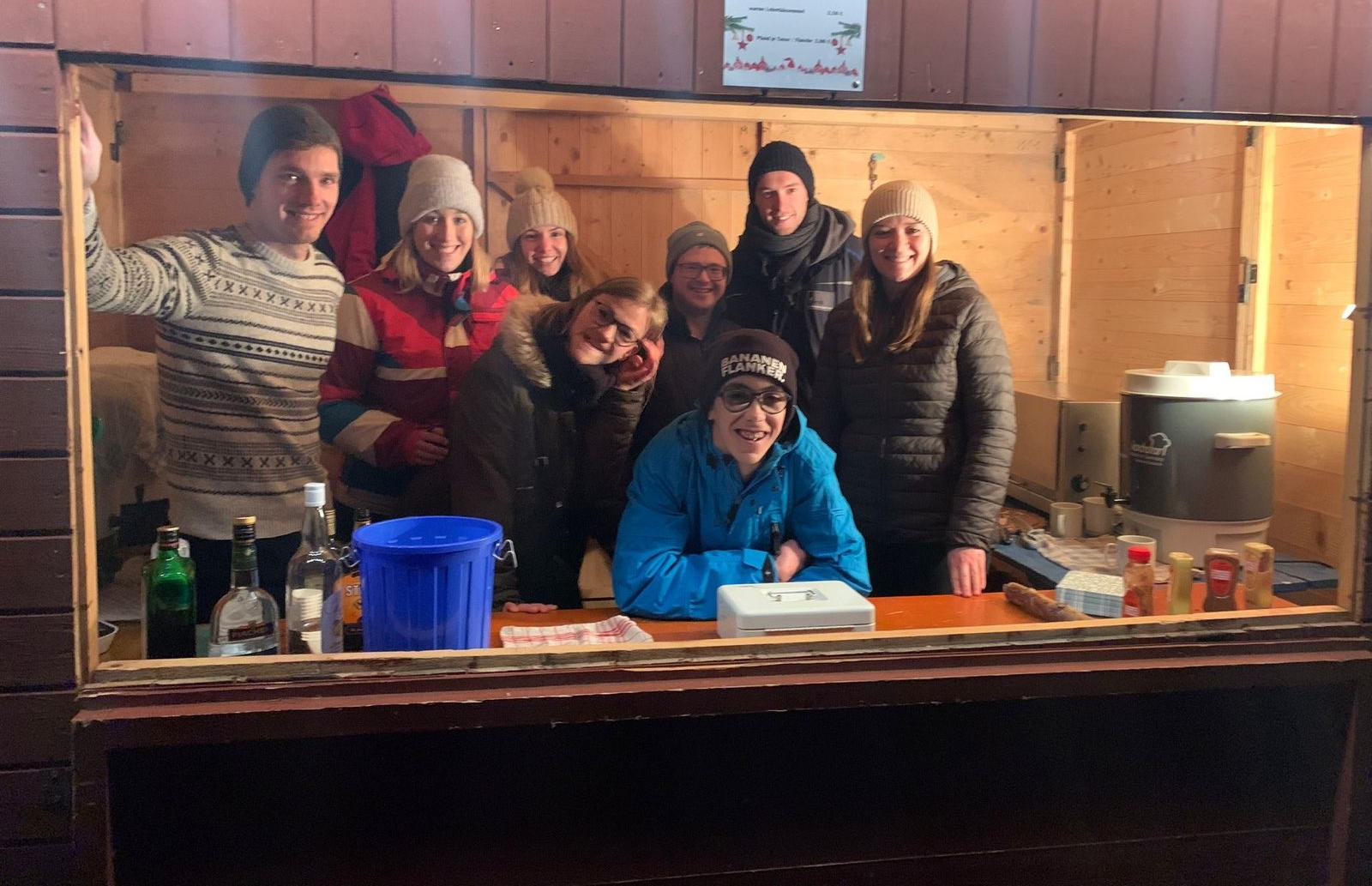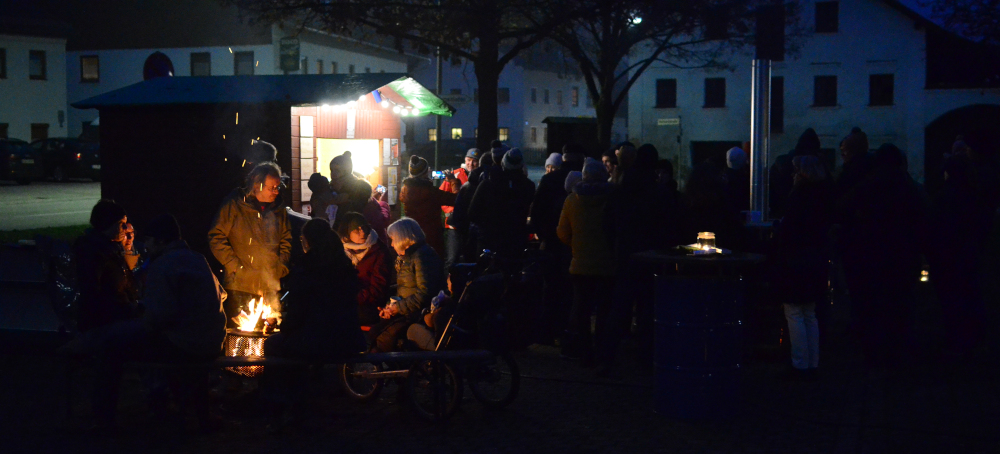Insights into BPAN research at the family conference in the USA
Insights into BPAN research at the family conference in the USA
BPAN families attending the NBIA Disorders Association (NBIADA) Family Conference in Houston, Texas, in May received updates on BPAN research from four researchers.
Kira Anderson
First up was Kira Anderson, a study coordinator with the NBIAcure team at Oregon Health & Science University (OHSU), who is working with Dr. Hogarth, principal investigator of the BPANready natural history study of BPAN. The findings from this study are based on the disease progression of affected individuals and are critical to understanding how the disease progresses and when therapeutic interventions might have the best effect.
The current study involves 127 people, most of whom have already been examined for the tenth time, which illustrates the scope of the study. It was found that BPAN patients who have seizures experience them for the first time at a very early age, but that they often disappear again in adolescence or early adulthood. Another finding is that puberty can start earlier in girls with BPAN. However, menstruation usually begins at a typical age. Another finding was that 17% of girls with BPAN aged 10 years and older take Parkinson's medication, while 55% of boys in this age group do so to alleviate movement problems.
NBIADA funded this study for the first two years with a grant and funds from the Million Dollar Bike Ride. For the third year, OHSU used other funds. The NBIADA then awarded another grant for two years in 2022. This will allow five years of data to be collected to obtain quantitative results.
Dr. Mario Mauthe
Dr. Mario Mauthe, a researcher at the University of Groningen in the Netherlands, described how his team is trying to identify and repair cellular processes that are disrupted by a mutated WDR45 gene. His team's approach is to first identify the cellular processes in which WDR45 plays a role. They then want to determine their function and, in the final step, decipher how these processes can be repaired.
Their main focus is currently on a cell line called SH-SY5Y, which is derived from brain cells and in which they switch off the WDR45 protein. This allows them to mimic the processes involved in BPAN and observe how the cells differ from a control cell line that is not affected by BPAN. They can also generate SH-SY5Y cells that are more similar to neurons. This gives them more information about what is going on in the brain and nervous system of people with BPAN.
The researchers examine the cells in which the WDR45 protein is switched off to see whether autophagy functions as it should. They found that it is disrupted in these cells and cannot be corrected by conventional interventions.
Dr. Mauthe also observed a difference in the mitochondria of the cells. Compared to the healthy control cells, these cells show slower growth and lower energy. The researchers want to further investigate these cells and also cells derived from BPAN patients to determine whether they have the same problems. Their ultimate goal is to find a drug that can repair the defective processes found in BPAN patients.
Dr. Bertrand Mollereau
Dr. Bertrand Mollereau, Professor at the Laboratory of Biology and Cell Modelling in Lyon, France, discussed whether restoring autophagy to its normal function is a relevant treatment option for BPAN. After an overview of cell biology, the mechanisms of autophagy and previous studies on autophagy, he asked whether a disruption is directly responsible for other defects known in BPAN, such as impairments in iron metabolism and other cellular entities. If this is the case, it is hoped that restoring autophagy will simultaneously improve the subsequent defects.
After an overview of the animal models used to study WDR45 defects, Dr. Mollereau showed how his team has extended the use of fruit fly models (Drosophila) to study neuronal damage in BPAN.
Drosophila show degeneration, neuronal atrophy, motor impairment and reduced life expectancy. The damaged Drosophila also show reduced autophagy and iron accumulation, which has not been achieved in any animal model to date, making this model very similar to the human representation of WDR45.
Iron accumulated in the brain can damage neurons. Mollereau wanted to reproduce this process in flies. Here, too, they showed the expected reaction that the increase in iron had a damaging effect.
Dr. Mollereau and his team are in the early stages of drug testing. They are testing drugs that are known to improve autophagy in cells, drugs that target iron metabolism and drugs that restore mitochondrial function.
Lena Burbulla
Dr. Lena Burbulla from Ludwig-Maximilians-Universität in Munich spoke about the susceptibility of the dopaminergic neurons of the midbrain in BPAN and how she wants to uncover the cause of the degeneration of these special neurons. These neurons produce dopamine, which controls movement in particular. As Burbulla also conducts extensive research into Parkinson's disease, she wants to find out whether Parkinson's research can also be helpful in researching BPAN. Parkinson's and NBIA diseases, especially BPAN, share common features, such as movement disorders, parkinsonism and the accumulation of iron in the same regions of the brain.
Using Induced Pluripotent Stem Cell (iPSC) technology, the researchers have cultivated stem cells to develop specific neurons such as those of the midbrain. These cells are cultivated over hundreds of days. The researchers are studying the course of development to find out where it may be possible to intervene.
In Parkinson's disease, dopamine metabolism is disturbed and so her team wondered whether this is also the case in BPAN. Dopaminergic neurons obtained from BPAN patients using iPSC technology show a disturbed iron balance and significantly increased oxidized dopamine. This ineffectively processed dopamine is highly reactive when it comes into contact with iron in the brain, resulting in a toxic environment for the neurons. The problem could be reduced by iron chelation, lowering dopamine levels and using antioxidants.
She investigated her theory using 3D midbrain organoids, a kind of "mini-brain". These were cultivated from skin cells of BPAN patients. This enabled her to confirm that oxidized dopamine in combination with iron proved to be toxic to the 3D midbrain.
These insights into BPAN research show that collaborative efforts are opening new avenues for a deeper understanding of the complex mechanisms of BPAN and potential therapies. As this research progresses and intertwines, there is growing hope for better opportunities for all BPAN sufferers.
Translation of the original article from the September newsletter of the NBIA DA:
https://www.nbiadisorders.org/images/newsletters/NBIA_Disorders_Association_September_2023_Newsletter.pdf

